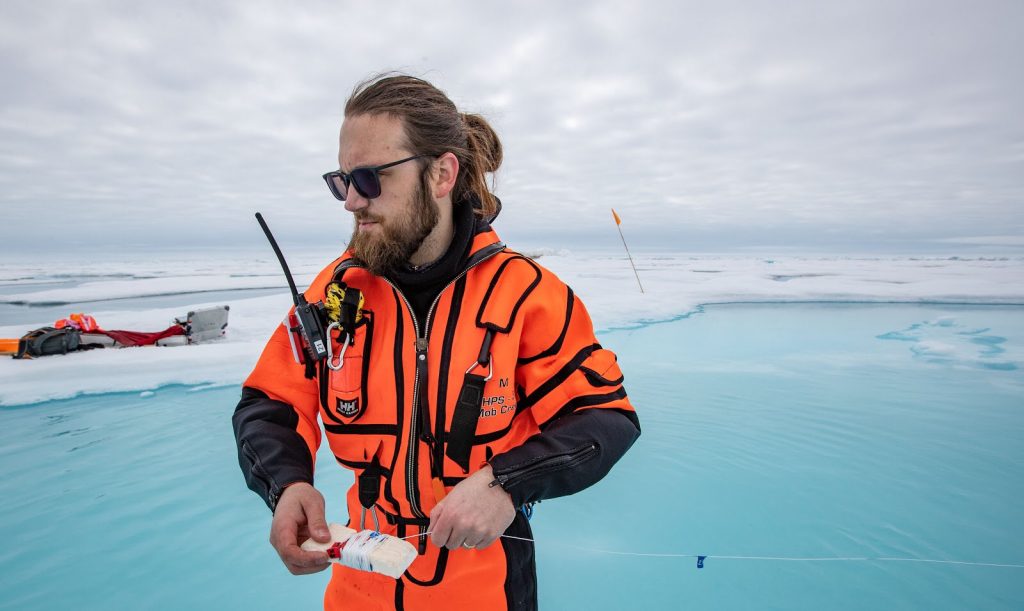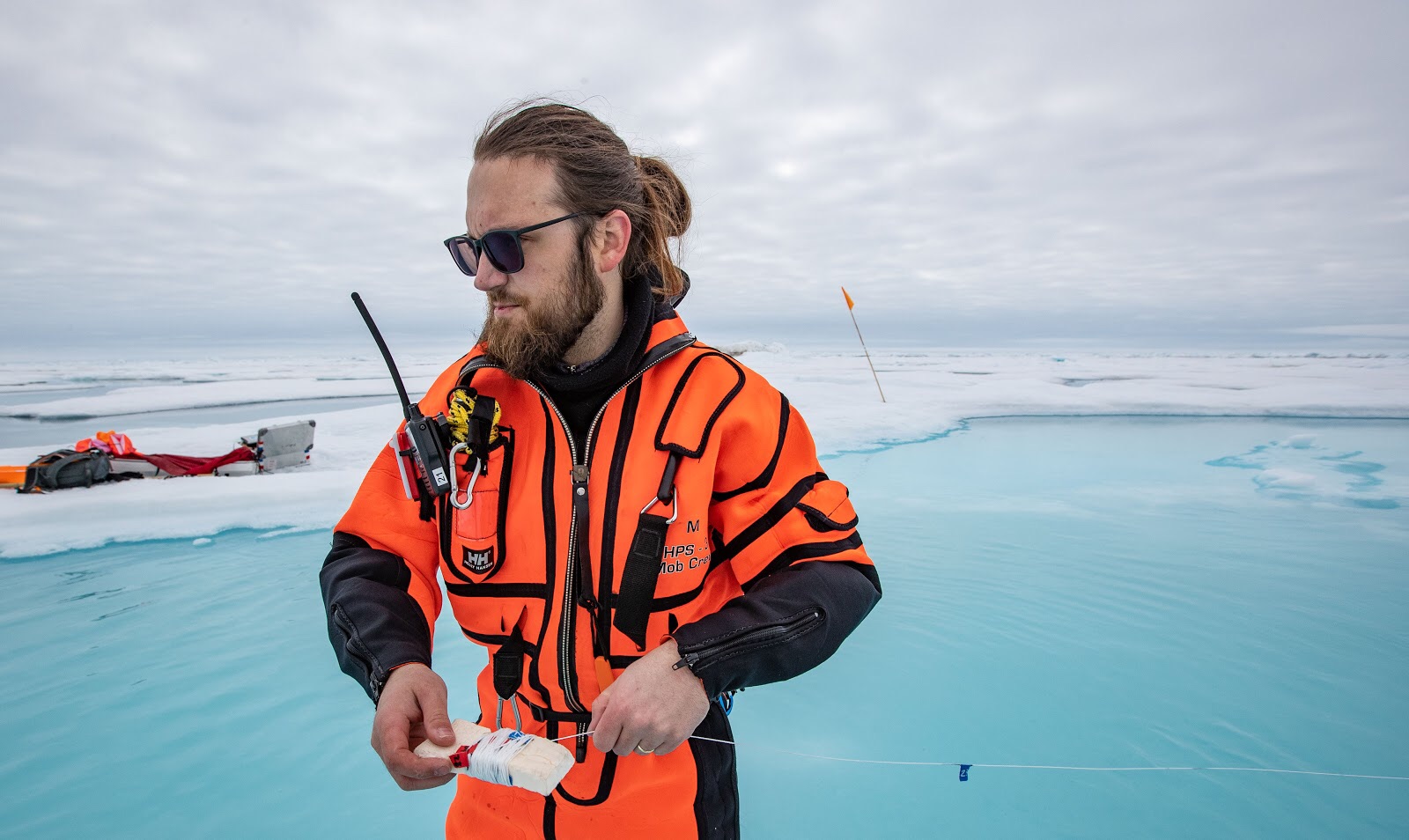by Matthew Shupe, CIRES/NOAA scientist and co-coordinator of MOSAiC
The most interesting thing happening around the floe right now is the development of a fresh water lens. The sea ice itself is fresher than the ocean because it goes through a process of brine rejection and becomes fresher over time. And of course, the snow that accumulates on the surface over the year is also fresh. As the melt season progresses, there is a huge influx of fresh water into the ocean system. It goes into ponds and then drains into the ocean via channels that reach to the ice edge or down through holes that develop in the ice. Being fresh, this water is buoyant relative to the saltier, denser ocean waters below. The temperature structure also supports this buoyancy difference; the melt water is at 0 degrees C, the melting point of fresh water, while the ocean water below is likely at about -1.8 degrees C, the melting point of saltwater (although at the interface it is likely warmed somewhat from above). The warmer water is more buoyant. So these two types of water do not readily mix. This process can be thought of like mixing oil and water…. They separate into two distinct layers based on their densities. The separation of fresh melt water from salty ocean water is pretty distinct right now. Cameras put down into the water show a crystal clear scene for the top 1-2 m of water, but then plunge down through a rapid transition to a hazier layer below. This structure is called a freshwater lens and it will stay in place as long as there are no major mixing events to erode it away, such as a big storm that stirs up the ice and ocean. The implications of this freshwater layer are many. Since the layers themselves do not readily mix, this limits the movement of heat vertically between the deeper ocean and the ice bottom…. Apparently slowing the ice bottom melt. These distinct layers also impact how, and where, sunlight is absorbed in the ocean. The lack of mixing also slows down the vertical transfer of key gases in the system. From the ecosystem, most creatures here are not adapted to freshwater environments so they hang out in the lower salty water. At the interface there is this layer of biological activity, benefiting from the salty state but also maximizing their access to photons penetrating into the top of the ocean. So many complex processes are in some way impacted by this layering of the upper ocean. I wonder about the spatial and temporal variability of this phenomenon, and how its controls on energy transfer impact ice melt snow and ice growth in the fall. This freshwater lens is a perfect example of a process that is well suited for the MOSAiC approach. It brings together the many different disciplines that are all linked through this seasonal melt and drainage process. A fascinating opportunity to study the many details in unprecedented detail.


